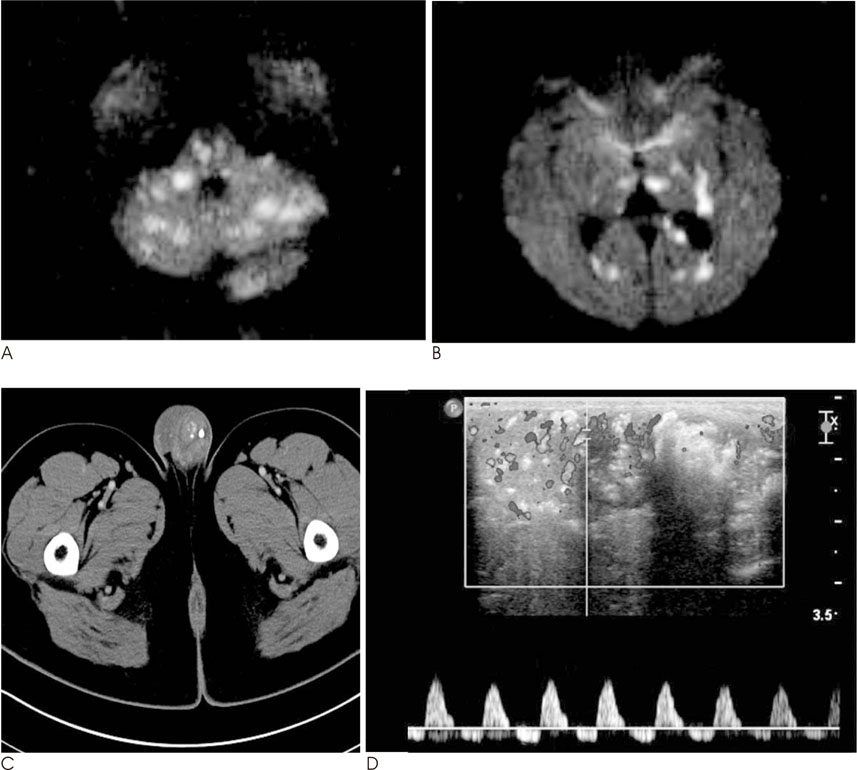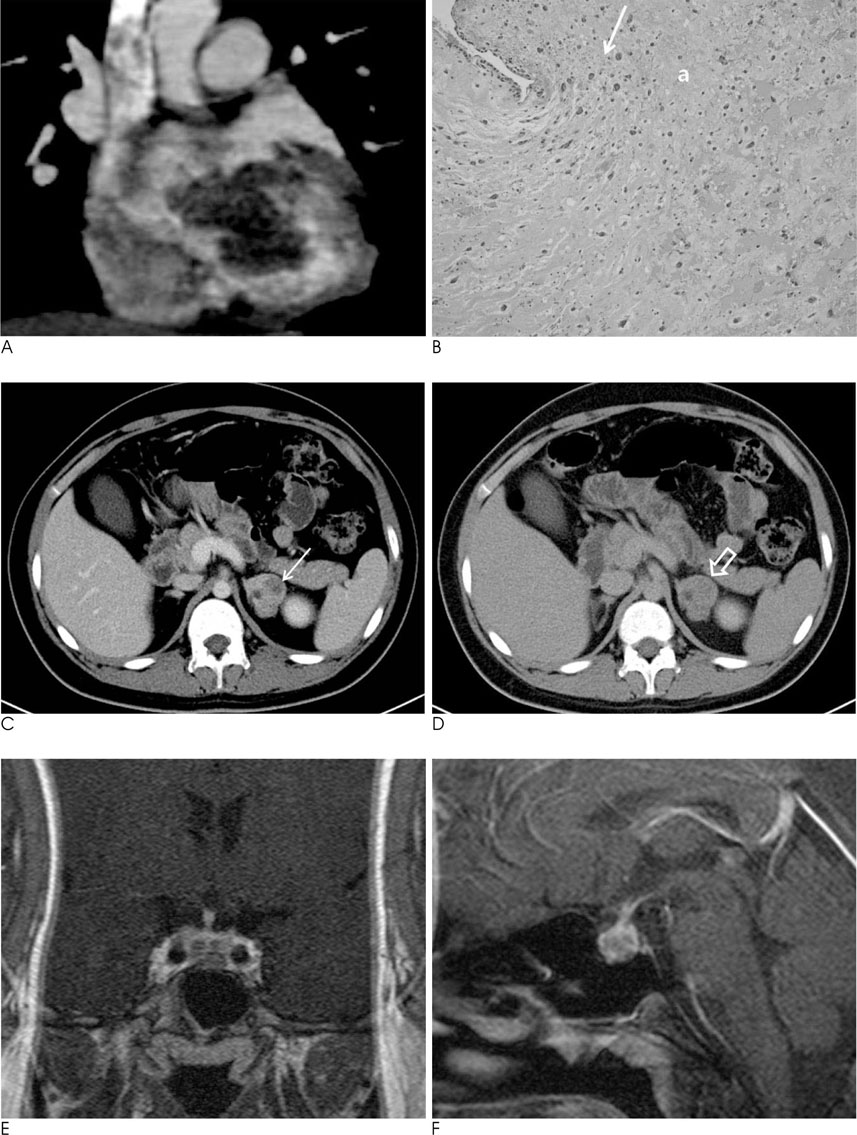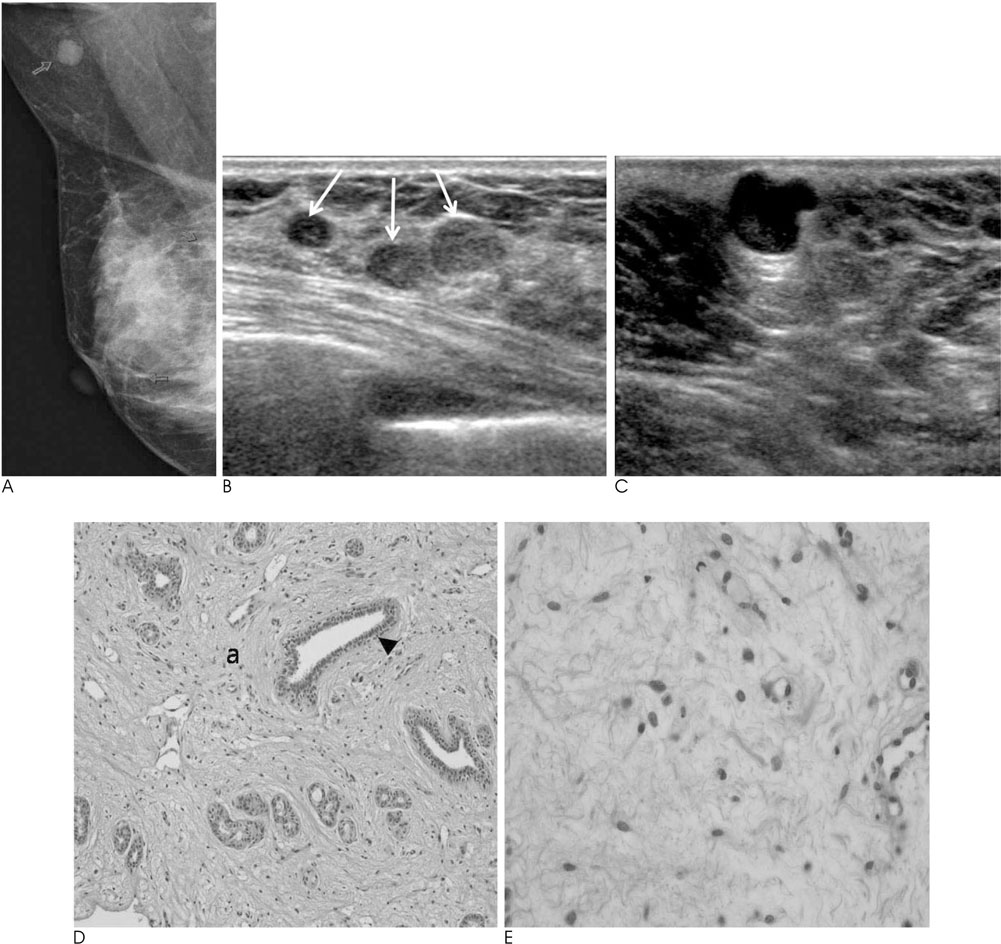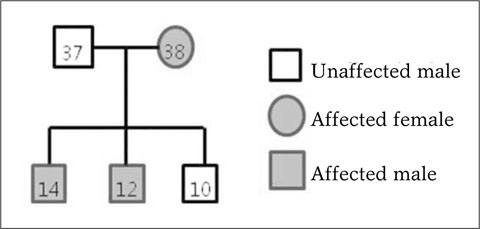J Korean Soc Radiol.
2010 Apr;62(4):393-400. 10.3348/jksr.2010.62.4.393.
Carney Complex in Three First-Degree Relatives
- Affiliations
-
- 1Department of Radiology, Eulji University Hospital, Korea. kskim@eulji.ac.kr
- KMID: 1460076
- DOI: http://doi.org/10.3348/jksr.2010.62.4.393
Abstract
- The Carney complex, the first reported in a series of 40 patients by J. A. Carney in 1985, is an autosomal dominant disease that is characterized by multiple neoplasia. The disease has a familial pattern in approximately one-half of the patients. We present the three cases of the Carney complex within one family.
Figure
Cited by 1 articles
-
Isolated Myxoma in the External Auditory Canal: A Case Report
Ah Reum Park, Tae Gyu Kim, Hyun-Jung Kim, Woo Ho Cho, Jae Hyung Kim, Myeong Ja Jeong, Soung Hee Kim, Ji-Young Kim, Soo Hyun Kim, Mi-Jin Kang, Ji Hae Lee, Kyung Eun Bae
J Korean Soc Radiol. 2018;79(2):101-105. doi: 10.3348/jksr.2018.79.2.101.
Reference
-
1. Carney JA, Gordon H, Carpenter PC, Shenoy BV, Go VL. The complex of myxomas, spotty pigmentation, and endocrine overactivity. Medicine (Baltimore). 1985; 64:270–283.2. Carney JA, Hruska LS, Beauchamp GD, Gordon H. Dominant inheritance of the complex of myxomas, spotty pigmentation, and endocrine overactivity. Mayo Clin Proc. 1986; 61:165–172.3. Radin R, Kempf RA. Carney complex: Report of three cases. Radiology. 1995; 196:383–386.4. Carney JA. Differences between nonfamilial and familial cardiac myxoma. Am J Surg Pathol. 1985; 9:53–55.5. Courcoutsakis NA, Chow CK, Shawker TH, Carney JA, Stratakis CA. Syndrome of spotty skin pigmentation, myxomas, endocrine overactivity, and schwannomas (Carney complex): breast imaging findings. Radiology. 1997; 205:221–227.6. Boikos SA, Stratakis CA. Pituitary pathology in patients with Carney complex: growth-hormone producing hyperplasia or tumors and their association with other abnormalities. Pituitary. 2006; 9:203–209.7. Washecka R, Dresner MI, Honda SA. Testicular tumors in Carney's complex. J Urol. 2002; 167:1299–1302.8. Brown B, Ram A, Clayton P, Humphrey G. Conservative management of bilateral sertoli cell tumors of the testicle in association with the Carney complex: a case report. J Pediat Surg. 2007; 42:E13–E15.9. Carney JA. Carney complex: the complex of myxomas, spotty pigmentation, endocrine overactivity, and schwannomas. Semin Dermatol. 1995; 14:90–98.10. Sarlis NJ, Chrousos G, Doppman J, Carney J, Stratakis C. Primary pigmented nodular adrenocortical disease: reevaluation of a patient with Carney complex 27 years after unilateral adrenalectomy. J Clin Endocrinol Metab. 1997; 82:1274–1278.
- Full Text Links
- Actions
-
Cited
- CITED
-
- Close
- Share
- Similar articles
-
- Anesthetic experiences of myxoma removal surgery in two patients with Carney complex: A report of two cases
- A Case of Epithelioid Blue Nevus Not Associated with Carney Complex in a Korean Woman
- A Case of Epithelioid Blue Nevus without Carney Complex
- Novel Mutation in PRKAR1A in Carney Complex
- Primary Multiple Cardiac Myxomas in a Patient without the Carney Complex





